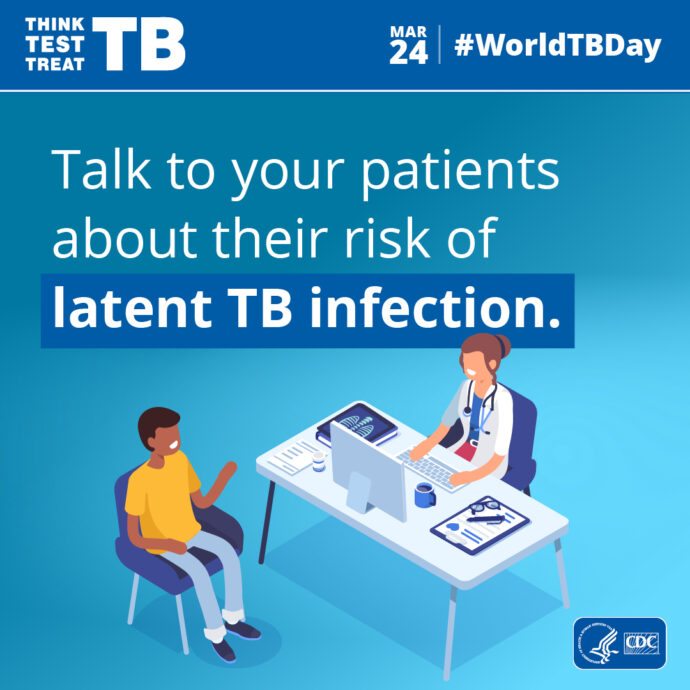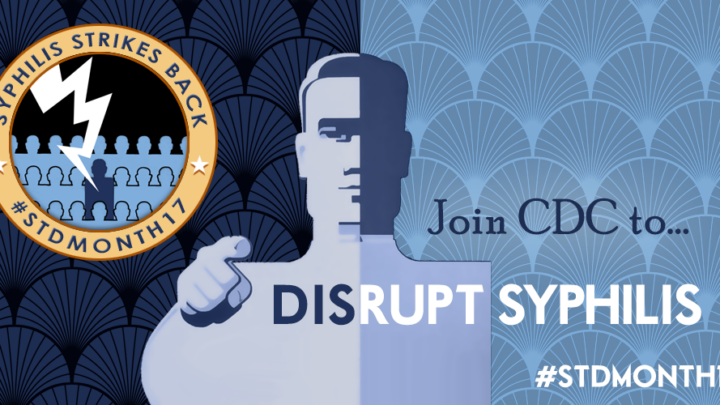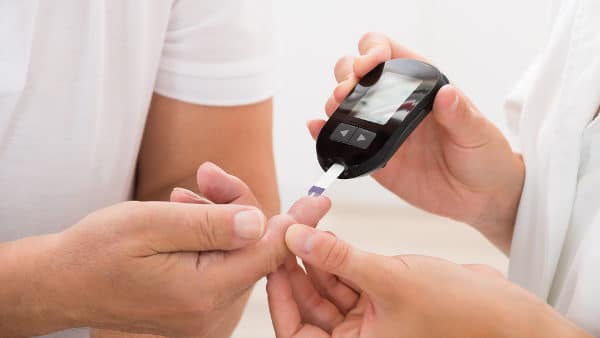
By The Centers for Disease Control and Prevention (CDC)
Each year on World Tuberculosis (TB) Day, March 24th, CDC acknowledges the impact of TB around the world and progress made against this disease. TB is preventable and treatable, yet too many people in the United States suffer from TB disease. You play a critical role in eliminating TB in your community and the United States.
Testing and treating latent TB infection is a critical step to protecting your community and reducing the spread of TB in the United States. Although preventing TB transmission in the United States remains a priority, more than 80 percent of U.S. TB cases are attributed to reactivation of latent TB infection. Without treatment, 1 in 10 people with latent TB infection will get sick with TB disease in the future.
As a trusted source of health information, it’s important to initiate a conversation about latent TB infection and TB disease with your patients at risk for TB, since there may be a lack of awareness about or stigma associated with these conditions. Testing for TB infection should be part of their regular medical care.
Here are 4 tips for starting the conversation with your patients:
- Introduce TB and address potential misinformation
- Explain that people with latent TB infection do not have signs and symptoms of TB disease and cannot spread TB bacteria to others, but these bacteria could become active and multiply, developing into TB disease.
- Explain that once active, people with TB disease can feel sick and spread it through the air to family, friends, and other people they spend time with.
- Discuss your patient’s risk
- There are several risk factors for TB, so it’s important to talk with your patients about their risk based on:
- areas of the world where TB is common (particularly Asia, Africa, and Latin America)
- exposure to individuals at higher risk (living or working in homeless shelters, prisons, or jails)
- other health conditions they may have (such as diabetes or HIV).
- There are several risk factors for TB, so it’s important to talk with your patients about their risk based on:
- Explain the testing process
- There are two types of tests for latent TB infection: the TB blood test and the TB skin test.
- Explain that the blood test is preferred because it can be done in one visit, and it’s the most accurate if you’ve been vaccinated for TB in the past.
- Discuss treatment options
- If your patient is diagnosed with latent TB infection, consider recommending shorter and more convenient treatments. While all the regimens are safe and effective, short course, rifamycin-based regimens are the preferred treatment options for latent TB infection because they have higher completion rates.
- Support your patients to help them complete treatment for latent TB infection.

CDC’s Think. Test. Treat TB campaign is the first national communications campaign to increase testing and treatment for latent TB infection in the United States. The Think. Test. Treat TB website has information and resources to help you share the Think. Test. Treat TB message. You can also access free >resources in multiple languages, including patient and provider education materials, and a partner toolkit.
Your state or local TB program can provide TB data for your community. TB Centers of Excellence for Training, Education, and Medical Consultation support U.S. TB prevention efforts.
Visit the CDC U.S. TB Elimination Champions Project to see examples of how healthcare providers and organizations across the U.S. are working to prevent TB in their communities.
For more information, visit www.cdc.gov/thinktesttreattb
___________________________________________________________________
About Sermo
Sermo is the original medical social network that empowers today’s physicians. Everyday thousands of fully verified physicians across more than 150 countries come to our platform to talk with peers, exchange medical knowledge, participate in paid medical studies, solve challenging patient cases, contribute to the world’s largest database of drug ratings – and enjoy a few laughs along the way.
Are you a physician or healthcare practitioner?
Explore the many benefits of Sermo’s medical community and join in on all the exciting conversations when you sign up for free today.














